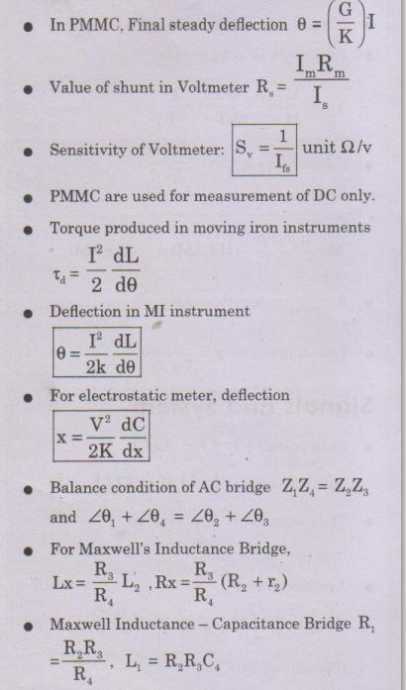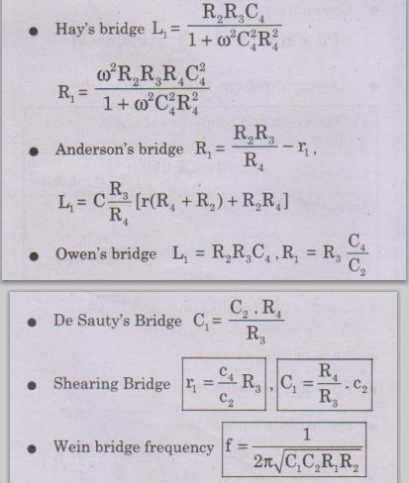| Other Discussions related to this topic | ||||
| Thread | ||||
| GATE Exam Instrumentation Branch Syllabus | ||||
| Equations and formula guide for Networks and Systems for GATE exam | ||||
| Gate Previous Question Papers for Instrumentation with Solutions | ||||
| GATE question papers for Instrumentation | ||||
| GATE cutoff marks for Instrumentation Engineering stream | ||||
| GATE Instrumentation Engineering books list | ||||
| M.Tech (Instrumentation) Colleges with GATE Score 223 OBC Category | ||||
| WBUT ECE 3rd Sem. Electronic Measurement and Instrumentation (EI 302) Exam Question P | ||||
| GATE Instrumentation Engineering Top Rank Holders Percentage | ||||
| PTU B. Tech ECE-3rd Sem-Electronic Measurement and Instrumentation (EC-203) Exam Pape | ||||
| GATE Instrumentation Engineering Syllabus | ||||
| GATE Instrumentation engineering previous years question papers | ||||
| GATE question papers of past years of Instrumentation Engineering | ||||
| List of GATE Important Formula for Control System | ||||
| GATE Instrumentation Engineeering syllabus free download | ||||
| GATE Instrumentation Coaching in Kolkata | ||||
| GATE Instrumentation Engineering Last years question papers | ||||
| got 31 marks in Instrumentation in GATE? Which NIT Can I apply to? | ||||
| GATE Instrumentation Engineering Exam Syllabus | ||||
| Best Books for GATE Instrumentation Engineering | ||||
|
#3
| |||
| |||
|
As you want to get Formula Guides for Measurement and Instrumentation, so here I am giving it: GATE Exam Formula Guides for Measurement and Instrumentation   GATE Exam INSTRUMENTATION ENGINEERING Syllabus Section 1: Engineering Mathematics Linear Algebra: Matrix Algebra, Systems of linear equations, Eigenvalues, Eigenvectors. Calculus: Mean value theorems, Theorems of integral calculus, Evaluation of definite and improper integrals, Partial Derivatives, Maxima and minima, Multiple integrals, Fourier series, Vector identities, Directional derivatives, Line integral, Surface integral, Volume integral, Stokes’s theorem, Gauss’s theorem, Green’s theorem. Differential equations: First order equations (linear and nonlinear), Higher order linear differential equations with constant coefficients, Method of variation of parameters, Cauchy’s equation, Euler’s equation, Initial and boundary value problems, Partial Differential Equations, Method of separation of variables. Complex variables: Analytic functions, Cauchy’s integral theorem, Cauchy’s integral formula, Taylor series, Laurent series, Residue theorem, Solution integrals. Probability and Statistics: Sampling theorems, Conditional probability, Mean, Median, Mode, Standard Deviation, Random variables, Discrete and Continuous distributions, Poisson distribution, Normal distribution, Binomial distribution, Correlation analysis, Regression analysis. Numerical Methods: Matrix inversion, solutions of non-linear algebraic equations, iterative methods for solving differential equations, numerical integration, regression and correlation analysis. Section 2: Electrical Circuits Voltage and current sources: independent, dependent, ideal and practical; v-i relationships of resistor, inductor, mutual inductor and capacitor; transient analysis of RLC circuits with dc excitation. Kirchoff’s laws, mesh and nodal analysis, superposition, Thevenin, Norton, maximum power transfer and reciprocity theorems. Peak-, average- and rms values of ac quantities; apparent-, active- and reactive powers; phasor analysis, impedance and admittance; series and parallel resonance, locus diagrams, realization of basic filters with R, L and C elements. One-port and two-port networks, driving point impedance and admittance, open-, and short circuit parameters. Section 3: Signals and Systems Periodic, aperiodic and impulse signals; Laplace, Fourier and z-transforms; transfer function, frequency response of first and second order linear time invariant systems, impulse response of systems; convolution, correlation. Discrete time system: impulse response, frequency response, pulse transfer function; DFT and FFT; basics of IIR and FIR filters. Section 4: Control Systems Feedback principles, signal flow graphs, transient response, steady-state-errors, Bode plot, phase and gain margins, Routh and Nyquist criteria, root loci, design of lead, lag and lead-lag compensators, state-space representation of systems; time-delay systems; mechanical, hydraulic and pneumatic system components, synchro pair, servo and stepper motors, servo valves; on-off, P, P-I, P-I-D, cascade, feedforward, and ratio controllers. Section 5: Analog Electronics Characteristics and applications of diode, Zener diode, BJT and MOSFET; small signal analysis of transistor circuits, feedback amplifiers. Characteristics of operational amplifiers; applications of opamps: difference amplifier, adder, subtractor, integrator, differentiator, instrumentation amplifier, precision rectifier, active filters and other circuits. Oscillators, signal generators, voltage controlled oscillators and phase locked loop. Section 6: Digital Electronics Combinational logic circuits, minimization of Boolean functions. IC families: TTL and CMOS. Arithmetic circuits, comparators, Schmitt trigger, multi-vibrators, sequential circuits, flip-flops, shift registers, timers and counters; sample-and-hold circuit, multiplexer, analog-to-digital (successive approximation, integrating, flash and sigma-delta) and digital-to-analog converters (weighted R, R-2R ladder and current steering logic). Characteristics of ADC and DAC (resolution, quantization, significant bits, conversion/settling time); basics of number systems, 8-bit microprocessor and microcontroller: applications, memory and input-output interfacing; basics of data acquisition systems. Section 7: Measurements SI units, systematic and random errors in measurement, expression of uncertainty - accuracy and precision index, propagation of errors. PMMC, MI and dynamometer type instruments; dc potentiometer; bridges for measurement of R, L and C, Q-meter. Measurement of voltage, current and power in single and three phase circuits; ac and dc current probes; true rms meters, voltage and current scaling, instrument transformers, timer/counter, time, phase and frequency measurements, digital voltmeter, digital multimeter; oscilloscope, shielding and grounding. Section 8: Sensors and Industrial Instrumentation Resistive-, capacitive-, inductive-, piezoelectric-, Hall effect sensors and associated signal conditioning circuits; transducers for industrial instrumentation: displacement (linear and angular), velocity, acceleration, force, torque, vibration, shock, pressure (including low pressure), flow (differential pressure, variable area, electromagnetic, ultrasonic, turbine and open channel flow meters) temperature (thermocouple, bolometer, RTD (3/4 wire), thermistor, pyrometer and semiconductor); liquid level, pH, conductivity and viscosity measurement. Section 9: Communication and Optical Instrumentation Amplitude- and frequency modulation and demodulation; Shannon's sampling theorem, pulse code modulation; frequency and time division multiplexing, amplitude-, phase-, frequency-, pulse shift keying for digital modulation; optical sources and detectors: LED, laser, photo-diode, light dependent resistor and their characteristics; interferometer: applications in metrology; basics of fiber optic sensing.
__________________ Answered By StudyChaCha Member |